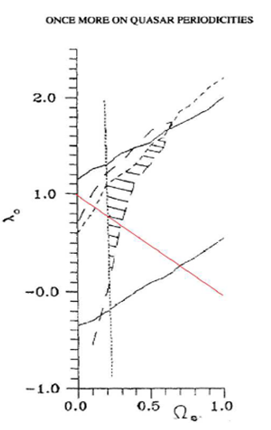eISSN: 2576-4543


Historical Study Volume 2 Issue 1
Department of Physics, National University of Public Service, Hungary
Correspondence: Istvan Horvath, Department of Physics, NUPS, Budapest, 2 Ludovika tér, H-1083, Hungary, Tel 36+1432-9154
Received: February 09, 2018 | Published: February 19, 2018
Citation: Horvath I. Early publications about nonzero cosmological constant. Phys Astron Int J. 2018;2(1):108-109. DOI: 10.15406/paij.2018.02.00055
In 2011 the Nobel Prize in Physics was awarded for the 1998 discovery of the nonzero cosmological constant. This discovery is very important and surely worth to receive the Nobel Prize. However, years earlier several papers had been published about a very similar discovery from observational data.
Keywords: history of astronomy; cosmology: cosmological parameters; cosmological constant; dark energy; large scale structure of the Universe
”The Nobel Prize in Physics 2011 was divided, one half awarded to Perlmutter S1 the other half jointly to Schmidt BP2 and Riess AG3 for the discovery of the accelerating expansion of the Universe through observations of distant supernovae.” the nobelprize.org wrote1.
Two research teams, Supernova Cosmology Project (SCP) lead by Saul Perlmutter and High-z Supernova Search Team (HZT) headed by Brian Schmidt, raced to map the Universe by locating the most distant supernovae. The two research teams found over 50 distant supernovae which were dimmer than expected - this was a sign that the expansion of the Universe was accelerating.1,2 However, HZT sent a paper for publication to the Astrophysical Journal on December 30, 1997 entitled ”Measuring Cosmic Deceleration ...” calculating cosmological constant as zero in a one sigma level.3
Theoretically, this was not new idea since Albert Einstein came out the idea of cosmological constant (often marked Lambda).4 Einstein did that because he was guided by the paradigm of the day that the Universe was static. When he heard the Edwin Hubble discovery that the Universe was actually expanding5 he declared that the inclusion of the cosmological constant was his”biggest blunder”2. Since there was no observation for cosmological constant after that most scientists assumed that Lambda is zero.6 However, series of papers were published in Astrophysics and Space Science in the early 90’s calculated ΩΛ from observed data.
1http://www.nobelprize.org/nobelprizes/physics/laureates/2011/
2As Kirshner R6 noted there was no evidence Einstein ever said that. G. Gamow was the first who suggested this without any citation.6
Paál G et al.,7 used the so called pencil beam survey8 to find out whether the regularity found in the galaxy distribution is quasiperiodical or not. It was found that Q0 was preferably negative.7 Therefore a nonzero Lambda term was needed. The preferred value was ΩΛ equal 2/3. This is very close to the value that nowadays is accepted.
In the second paper9 a two parameter fit was made. The positive cosmological constant (negative Q0) found to be still needed. In the third paper10 optical and radio quasars were also used to find the preferred cosmological parameters. Figure in that paper10 showed the results (Figure 1). As it was written the contour meant 80% confidence level. The preferred region is similar that today analysis suggests. For comparison please see this www page http://vizion.galileowebcast.hu/HOI/Comparation.jpg

Figure 1 This figure was published in Holba et al. 199410 (Figure in that article). The red line represents the flat cosmological model.
The admissible region of regularity on the ( λ0, λ0) plane. Solid: 80% significance border of regularity for galaxies. Long dash: same for radio quasars. Short dash: same for optical quasars. Dotted: lower density limit. Hatches: the admissible region.
The author thanks for his supervisors, Lukács B & Paál G7,9 to being part of these researches. Unfortunately, Paál G7 died in 1992. This was surely affected the fact that these results were almost unrecognized. However, lately many works (e.g)11–16 have recognized Paal’s publications.
None.
Author declares there is no conflict of interest.

©2018 Horvath. This is an open access article distributed under the terms of the, which permits unrestricted use, distribution, and build upon your work non-commercially.